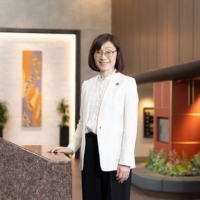Former Prime Minister Junichiro Koizumi's announcement that he will not run for the next Lower House election means the departure of a decisive, bold and charismatic politician from the nation's political scene. It is symbolic that his announcement came just after Mr. Taro Aso took power. Prime Minister Aso's call for an aggressive fiscal policy to cope with a downturn of the Japanese economy is the antithesis of Mr. Koizumi's strict structural reform policy line. A clear defeat of Ms. Yuriko Koike, Mr. Koizumi's protege, in the Liberal Democratic Party presidential race, may have triggered his decision to step down.
Mr. Koizumi is known for following what has been described in the media as his own "aesthetics." His September 2006 resignation from premiership while still retaining political and physical stamina after serving five years and five months reflects his aesthetics. And the decision this time to retire from the Diet at the relatively young age of 66 again reflects his aesthetics. During his term, it was not nationalism that drove him to visit Yasukuni Shrine six times, a move that chilled Japan's ties with China and South Korea. It was his sense of aesthetics.
Mr. Koizumi's bold moves to meet with North Korean leader Kim Jong Il in Pyongyang in September 2002 and in May 2004 and his use of sound bites such as "I will destroy the LDP" helped buoy his popularity. But his political style characterized by short, cutting phrases tended to make politics theatrical. A typical example was the September 2005 Lower House election, which Mr. Koizumi succeeded in turning into a single-issue election over the postal service privatization, bringing nearly 300 seats to the LDP.

















With your current subscription plan you can comment on stories. However, before writing your first comment, please create a display name in the Profile section of your subscriber account page.